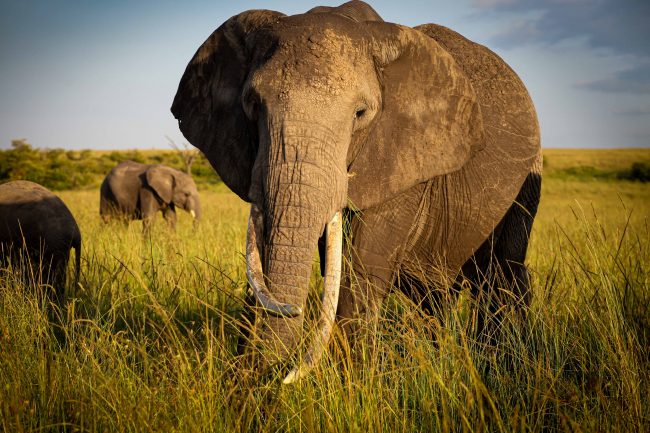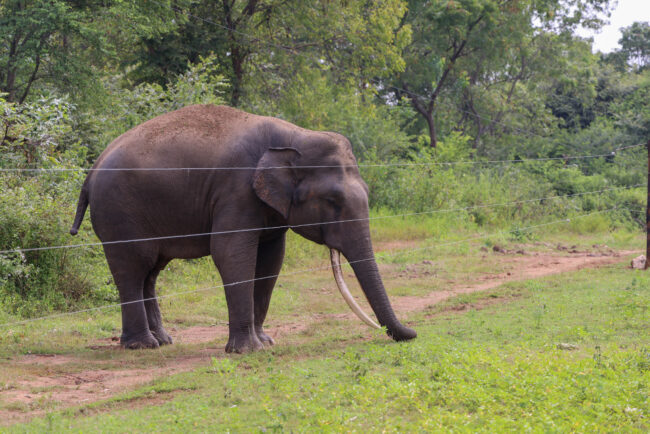
Photo: Sateesh Venkatesh
Sri Lanka is facing one of the world’s most acute human-elephant conflicts (HEC), with over 3,400 elephant deaths and more than 1,100 human fatalities in the past nine years. As forests shrink and migratory corridors are blocked, elephants, highly intelligent and emotional animals — are increasingly forced into farmland in search of food and water, bringing them into dangerous conflict with rural communities.
At the same time, the goal of reducing rural poverty depends on the wellbeing of these same communities, many of whom rely on small-scale farming for survival. Each night spent guarding crops, each harvest destroyed by elephants, pushes families further into hardship.

Photo: Sateesh Venkatesh
The National Action Plan for the Mitigation of Human-Elephant Conflict
The National Action Plan for the Mitigation of Human-Elephant Conflict, developed in 2020, by a Presidential Committee of wildlife experts, State officials, and district representatives, called for an end to elephant translocations and drives, urging a shift toward community-led coexistence strategies instead. Drives have been known to cause more harm than good—terrifying the elephants and causing aggression and destruction as a result.
While efforts to protect lives are urgent, conservationists, scientists, and local leaders are calling for a shift from reactive measures to long-term, community-based and science-informed strategies. Community-managed fencing, protection of elephant corridors, and coexistence approaches rooted in lived experience have already shown promise — and are part of a national action plan developed by Sri Lankan experts.

A national park and mango field in Sri Lanka

Photo: Sateesh Venkatesh
But will this National Action Plan be followed?
During the previous administration, local efforts like electric fencing around rice fields — coordinated by the Department of Agrarian Development began to show results. For the first time in nine years, both elephant and human fatalities decreased. But when the government changed, momentum was lost and the government strayed from the plan.
“It’s as if we’re determined to ignore our own successes,” says Kurunegala District Secretary D. Dissanayake.
“We saw what worked: Community engagement, smart fencing, localised solutions. Yet, we keep returning to failed tactics, driven by politics rather than science.”
Implementing the National Action Plan, with adequate funding and political backing is critical for solving this problem long term. This means working with communities by listening, learning, and investing in solutions that benefit both people and elephants.

Photo: Sateesh Venkatesh
The tragic death of Bhathiya, a legendary wild tusker in Sri Lanka, who died of gunfire on Tuesday morning highlights the importance of solving this issue quickly.
A Bigger Issue
Sri Lanka isn’t alone in facing human-elephant conflict. This is a growing issue in every country where wild elephants live, as human expansion into elephant habitats continues. Different countries are trying different solutions, but one thing is clear: we need real, community-led strategies that make peaceful coexistence possible.
If you’re interested in local solutions, join World Elephant Day in amplifying this work and creating change for elephants worldwide. Donate today.
https://givebutter.com/WED2025

Photo: Sateesh Venkatesh
____________________________________________________________________________________________
Written by Caleigh Campbell for World Elephant Day
Executive Director, Patricia Sims
Photos courtesy of Sateesh Venkatesh, a conservationist biologist and 2024 Fulbright-National Geographic Award recipient who studies human-wildlife conflict. His work aims to understand the complex relationship between elephants and subsistence farmers in Sri Lanka.
_____________________________________________________________________________________________
Sources:
- The Morning: Fuelling conflict, not solutions
- Ada Derana: Injured tusker ‘Bhathiya’ dies
- The Sunday Times: Govt. ignoring underlying causes worsens human-elephant conflict



